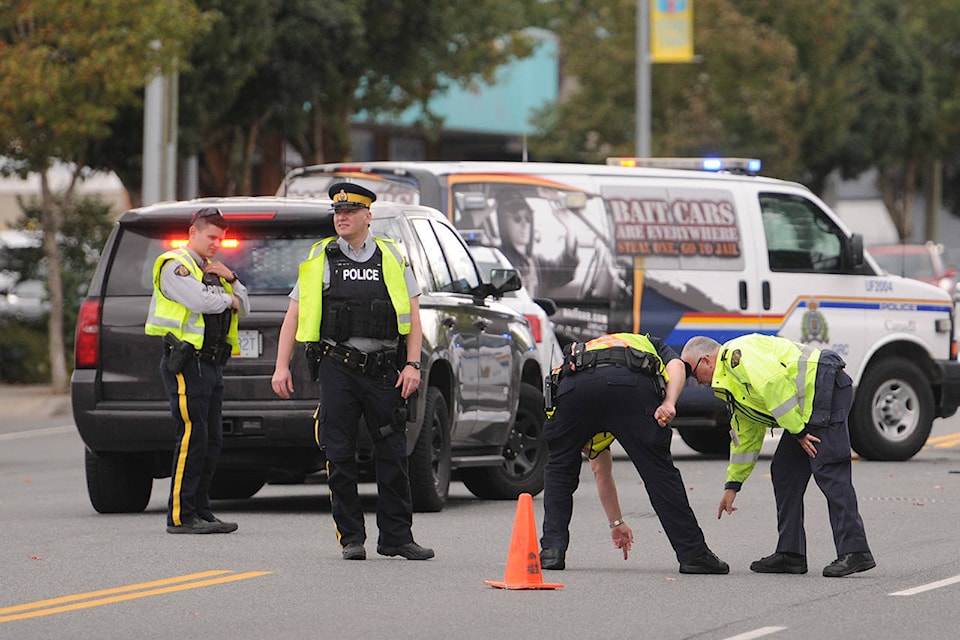The photo depicts a man lying flat on his back in the middle of Young Road. His bald (or balding) head is visibly tucking out from under a white blanket.
Two tan-coloured socks are on his feet, which are also sticking out from under the sheet. One brown shoe is half on his right foot, pointing heavenward.
But you didn’t see that photo. And you won’t.
What you saw in the Oct. 4 edition of the Chilliwack Progress to go with the tragic story of the 78-year-old man hit while on his bike and killed is an image of four RCMP officers on Young Road in front of their vehicles, investigating the scene.
The man was in that photo just off to the right as it was taken by our own Jenna Hauck. But he was cropped out.
“Should we run that photo?”
The question comes up often in newsrooms: what is our ethical obligation to our readers/viewers? To the family/friends of the victim? To our profession?
Every example is different and there really are no hard and fast ethical guidelines.
The debate on this subject is age-old. From nine-year-old Phan Thi Kim Phuc running naked down a Vietnamese road after being burned with napalm to three-year-old Kurdish boy Alan Kurdi lying dead in the sand in Turkey, horrific images can be important in changing public opinion, which sometimes has historic consequences.
There was a National Public Radio discussion a few years back after the New York Post published a photo of a man trapped in the path of an oncoming subway under the headline “Doomed: Pushed on the subway track, this man is about to die.”
One caller in to the show said: “It is something that people have to see because it’s what brings up the discussion of humanity that we have.”
On the contrary, Kelly McBride from the Poynter Institute for Journalism suggested there is a journalistic metric to be used in these instances.
“It’s an invasion of privacy to the people in the photo, and it’s hurtful, harmful to the people who view the photo,” McBride said of certain photos. “But it has a broader journalistic purpose. It’s meant to reveal something to the audience so that the audience can uphold their democratic duties.”
In the case of Phuc and Kurdi, clearly there is a broader journalistic purpose. In the case of the subway death? McBride figures it was more “prurient and voyeuristic than… journalistic.”
So between a photo of a dead child fleeing war, and of the gentleman on Young Road in Chilliwack? The former is a tragic reminder of the plight of refugees and that many of the victims of war are children. The latter is a tragic vehicle-pedestrian accident.
But I think the difference is a matter of degree rather than kind.
We are literally surrounded by cars and trucks in our modern cities, coming and going to and from work and play in four-thousand pound machines capable of great speeds and great harm. Automobiles kill more people than do all weapons combined in the U.S., according to J. Peter Rothe, author of Driven to Kill: Vehicles as Weapons.
Not knowing the circumstances of the Young Road death, it could also point to the need for more defensive driving skills, and/or how even the most skilled driver can be surprised by erratic pedestrian/cyclist activity.
A version of what occurred to the driver and the cyclist could have happened to any of us. So maybe there is broader journalistic value to the image of the deceased man on the road.
But I know it would have been hard for the driver and the victim’s family and friends to see, maybe for many other readers/viewers as well.
In this case, hopefully the photo crop was the right choice.
@PeeJayAitch
paul.henderson@theprogress.com
Like us on Facebook and follow us on Twitter.
